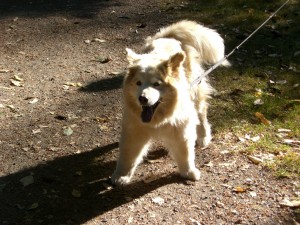
In my dream, she approached me with that sparkle she always had in her eyes. “Come to me and lay beside me and I will take away your fears,” she seemed to say. I lay down with my head against her soft golden fur and pressed deeply into her side feeling protected and safe. I could feel her love and warmth, hear her heart beating, feel how alive she was, yet I knew in the dream that she was ready to become a dog of the stars. I woke up knowing that Rooney had decided it was time to leave this world. Her beloved human companions called me soon after to tell me they thought it was time to let her go.
While I felt drowning in sorrow, I knew it was the end of a wonderful, miraculous life. Rooney had decided that she could not stay here any longer, this was her choice. Two and a half years earlier she had been diagnosed with bladder cancer and was given at most three months to live. Her human companions had done all they could for her, putting in a port to drain urine out of her body because she could no longer pee through the normal opening, starting her on chemotherapy, and waiting for the day soon that they would have to let her go. Rooney, however, had no intention to follow the prognosis she was given.
When I first met Rooney she had already been living with cancer for six months. As I approached the house, I saw two happy dogs peering out the window, two dog tails wagging. Syd was the first to greet me, jumping up and down and trying to inhale my arm – I must taste you! Rooney stood back and watched waiting patiently for her dog sister to find her mind again. A beautiful dog, she was part Chow, with long golden hair, a thick mane, and deep brown eyes which if you looked into showed her complex soul.
Rooney was unique in that she really wasn’t sick. Yes, after her monthly chemo she would feel a little off for a day or two but besides that she was really quite good. She wasn’t dying even though she had a fatal disease, in fact she would get quite upset if you talked about her dying or even about her being sick. I would come to give her acupuncture and we would start to talk about some little problem she was having and she would get up and leave – walk right out of the room and find somewhere else to be. She seemed to say, “Hey, I’m just fine please don’t dwell on my problems. I’m here, I’m me, and I’m not my illness. Love me for who I am today, at this moment. Will you please stop acting like there is something to be sad about here?”
When Rooney was diagnosed with terminal cancer, she became more free to live. We often said that Rooney had complete control over her cancer: not only did she live every day fully, enjoying her walks and the great love she received from her people, but everyone she touched lived more fully because of her. Every day with her became a gift and we took nothing for granted. When I made my weekly visit to treat Rooney, I never stopped being amazed at the grace of how she lived with her illness, and the joy that she gave to each moment. It was impossible to walk away from Rooney and not feel more present in my own existence.
Towards the end of her illness, Rooney reached a point where we knew she was dying. She once again lost the ability to urinate on her own, which she had regained shortly after staring her chemo, but to our amazement she started to be more like a puppy, regrowing her hair with a soft downy coat that she had only had when she was young and eating better than she had in a long time. I think Rooney finally accepted she was dying, knowing it before any of us did. It had been important to her to see the new twin children who were born to her people shortly before her death. They had arrived and she was free to go, she had lived over thirteen years, a good age for even a dog without cancer.
Even though Rooney was completely dependent on her people to drain her urine every 6 hours the last months of her illness, she was happy because she was among her family and at home. She was loved, well cared for but most importantly valued for her wisdom and what she gave to those who loved her. I think a large part of why Rooney was able to work with her illness with such grace and live so much longer than anyone expected was that her human companions did not see her care as a burden but as a gift given to a much-loved friend. In exchange she gave us all unconditional love and the gift of living each moment present and aware, feeling joy, feeling sorrow, seeing the movement of time as something to coast along on and not to fear.
The phone rang again and it was my best friend Cheryln calling to tell me that her labor had began. I remember eight months earlier finding out that Cheryln was pregnant and offering to be at the birth. For the past month I had been waiting with excitement for this call and now I wanted everything to wait. “Don’t worry the contractions are still far apart,” she told me, “no need to leave yet.” I was conflicted over my promise to her to be present at this birth and my need to be with Rooney at the end, neither could wait and Cheryln was a three hour drive from me. I silently hoped that I would be able to be present with them both and was also astonished that both would come on the same day.
Somehow it seemed more than coincidence that Rooney would pick the time to pass away to be the same day as the birth of a new life that I was also so involved with. She seemed to want to point out that death is not an end but just another step in the cycle of life we are all a part of. I think this was also why she waited for the twins to be born before choosing to depart.
Cheryln’s labor did wait, and I was able to be present with Rooney and her family when she passed away. Her death was very peaceful, and she passed away surrounded by her whole family of people and animals – those she loved most and who loved her most – by her side, in her home. While her passing was full of sorrow and left us with a hole in the space that she had filled for so long, there was something about being present when such a wise being leaves this existence, after living life so fully, that inspires us all to live our lives with more joy.
After returning home from Rooney’s passing, the phone rang again, and it was Cheryln asking me to began my drive down to Portland. I jumped in the car with our other friend, Jenn, who was also to help with the birth. I was overwhelmed with the sorrow I felt about Rooney and the joy and anticipation of a new life about to began. Lilliana’s birth was beautiful and amazing and she came into the world with a good set of lungs, at home surrounded by people who loved her family, the cat and three compassionate naturopaths who helped with the birth. I spend most of the labor holding Mr. Moo, their cat, so he could watch what was happening. He was very fascinated with the whole experience. Mixed with my sorrow there was great joy with the birth of this little perfect being. Ten fingers, ten toes and one very long and active tongue.
I will never forget how it felt to experience the sorrow of the passing of such a wise friend and teacher, who had lived her life how all of us wish we could, and the joy of the perfect birth of a baby who has just began in this world, all within a day. Through my work I have had many great animal teachers who do not speak with words but who guild us through the way they live, love, and accept. Rooney was one of these teachers and I hope that her wisdom on how to live can inspire us all.
Return to Integrative and Holistic Methods for Treating Cancer in Cats and Dogs
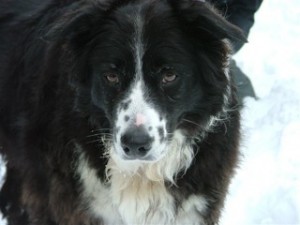 So often our animals remind us how it is to be free to play and enjoy the world. Today while on vacation in Pacific Beach I saw a couple dogs running across the sand, their feet flying off the ground with every step. So happy, so in the moment. Barking wildly at their people to throw sticks, running against the wind, and having the time of their lives.
So often our animals remind us how it is to be free to play and enjoy the world. Today while on vacation in Pacific Beach I saw a couple dogs running across the sand, their feet flying off the ground with every step. So happy, so in the moment. Barking wildly at their people to throw sticks, running against the wind, and having the time of their lives. Today I also received some beautiful photos of Lucca and Sadie playing in the snow, in their element, jumping in the air, biting at the snow. How does it feel to be so happy and excited about life? Through our dogs we get to experience some of this, what greater gift. Laughing as we play and toss sticks or throw snow in the air. Laughing as we run after them in their joy which we are allowed to share in.
Today I also received some beautiful photos of Lucca and Sadie playing in the snow, in their element, jumping in the air, biting at the snow. How does it feel to be so happy and excited about life? Through our dogs we get to experience some of this, what greater gift. Laughing as we play and toss sticks or throw snow in the air. Laughing as we run after them in their joy which we are allowed to share in.









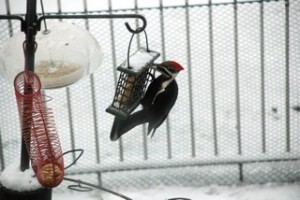











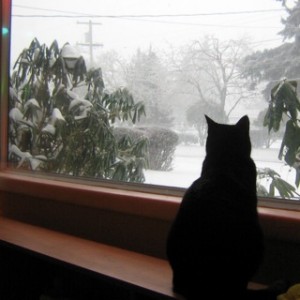


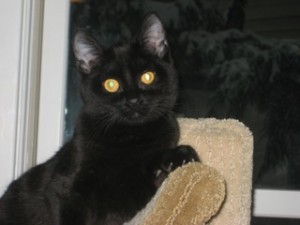 In the mind of kittens, the world is a constant source of excitement forever being full of new and amusing things. Anything that moves should be chased after and pounced on as hunting skills are developed. “I have slain the fuzzy catnip octopus! I am the mighty hunter!” our kitten Raven seems to say. Moving toes are fair game and anything that can be climbed should be. Plants are a natural source of entertainment and are a nice place to rest one’s bottom. Although the humans sure get upset when you knock them over.
In the mind of kittens, the world is a constant source of excitement forever being full of new and amusing things. Anything that moves should be chased after and pounced on as hunting skills are developed. “I have slain the fuzzy catnip octopus! I am the mighty hunter!” our kitten Raven seems to say. Moving toes are fair game and anything that can be climbed should be. Plants are a natural source of entertainment and are a nice place to rest one’s bottom. Although the humans sure get upset when you knock them over.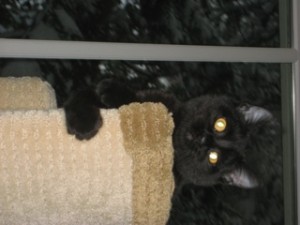

 Raven has become an ambassador for FIV positive cats among by family and friends who have also fallen in love with him. If you are considering adopting a cat please consider helping one with FIV. The Seattle Humane Society has a whole room of adult FIV positive cats and often kittens, as do many other rescue groups.
Raven has become an ambassador for FIV positive cats among by family and friends who have also fallen in love with him. If you are considering adopting a cat please consider helping one with FIV. The Seattle Humane Society has a whole room of adult FIV positive cats and often kittens, as do many other rescue groups.




